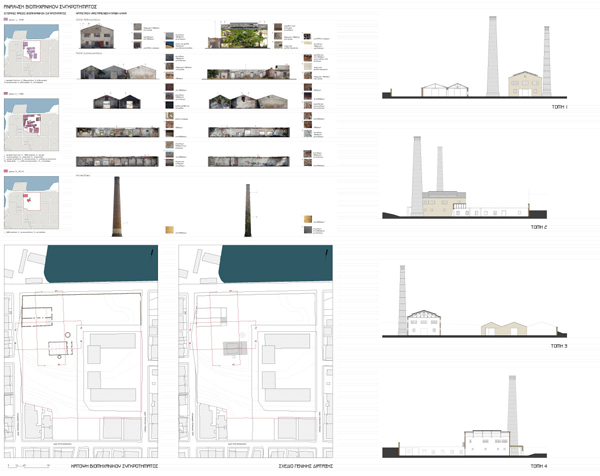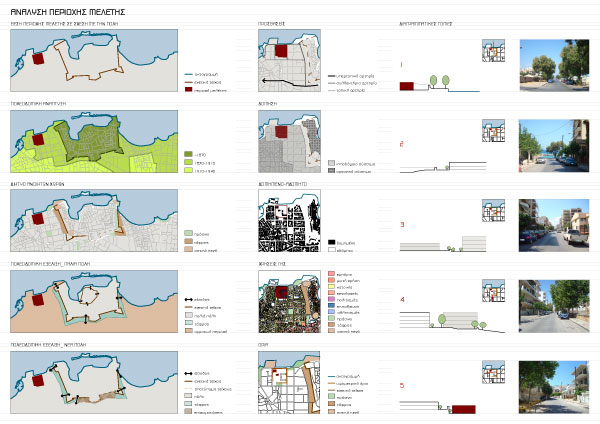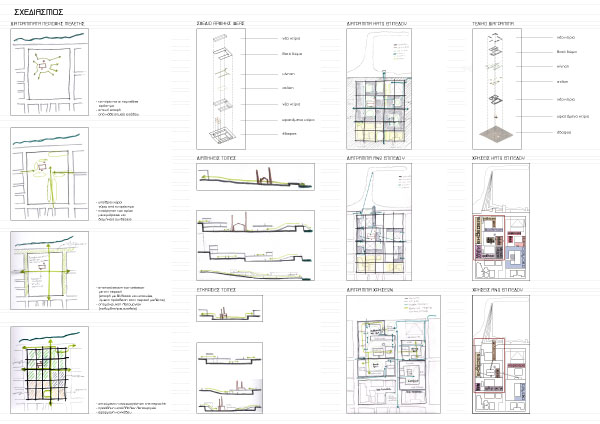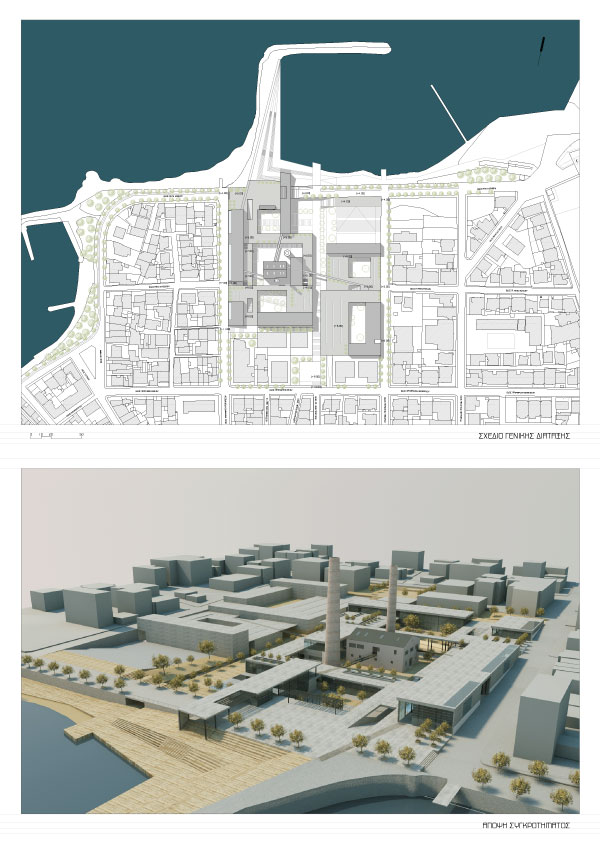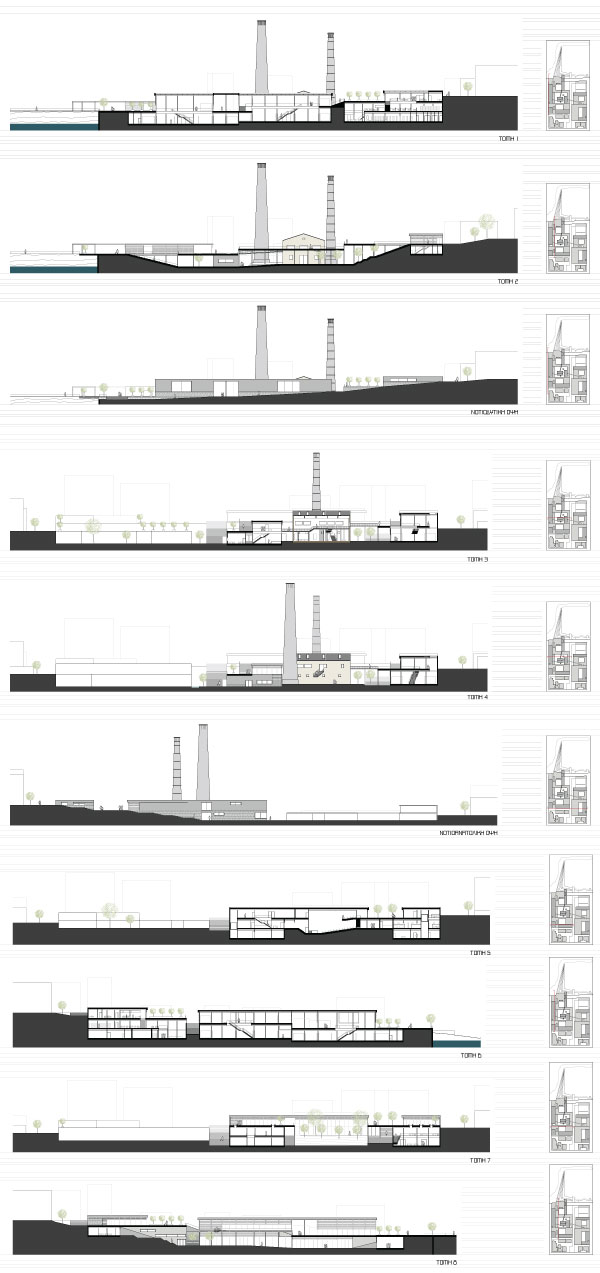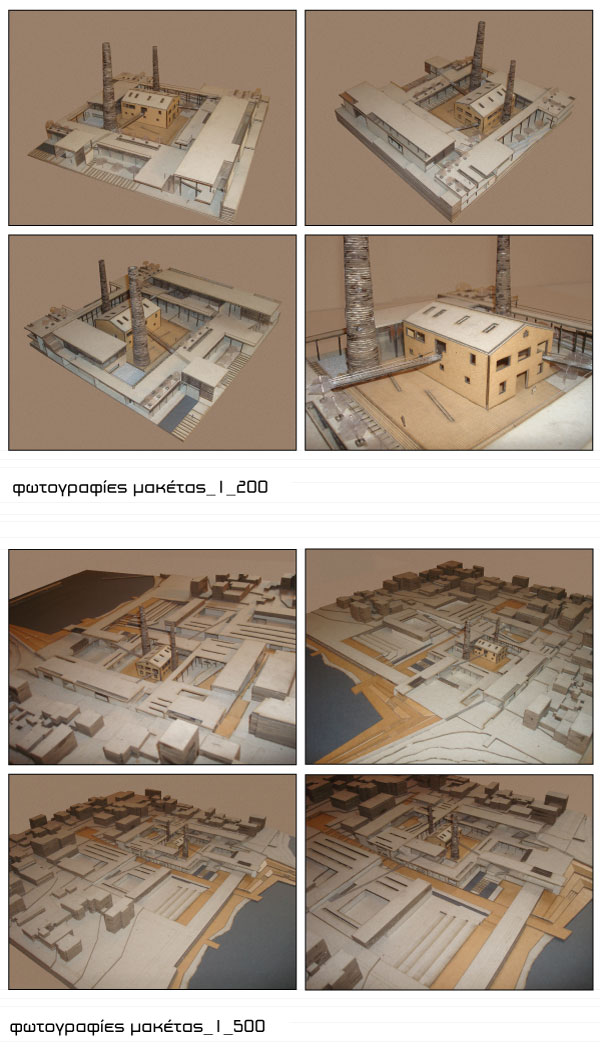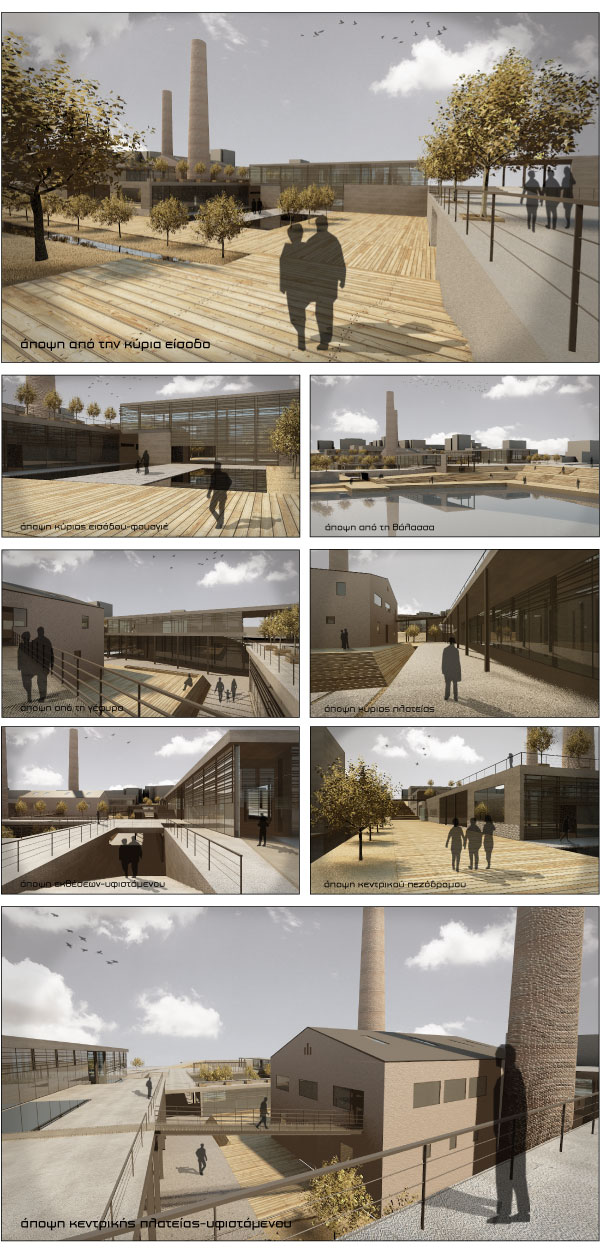STUDENTS PROJECTS
PROJECTS2013
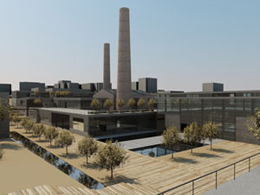
19 November, 2013
Activation of residual areas
Reintegration of the former factory AVEA into the urban fabric of Chania.
Student: Chormpa Kanella
Supervisor: Tzompanakis Alexios
Technical University of Crete, Department of Achitecture
Presentation Date: 22 April 2013
Subject of this thesis is the AVEA factory in Nea Chora of Chania and in what ways will reintegrate in the city, in order to provide a new public space for residents and visitors.
The former AVEA factory was constructed in 1889 for the purpose of processing olive's pulp to produce kernel olive oil and soap, and was one of the first industrial units of Greece. The relocation of the factory started in 1994 in new site and since 2002 has began the demolition of most buildings. Today, all over the whole have remained the two chimneys and two buildings, the former packing and former boiler room.
Design goal is the reintegration of the industrial complex (which now is an urban void) into the region and the city. The aim is to design new public spaces (stations and movements) for the city through the reuse of industrial shells, combined with the addition of new functions (cultural, commercial, recreational) in order to become attraction point for the area.
From the former industrial complex remain the former boiler room and the two chimneys, aiming to become landmarks for the area. The existing boundaries are removed in order to create new traversal and longitudinal links that would abut in the existing buildings. Also, purpose is the restoration of the complex relations with the region. It is required contact with the sea and the residences and direct access to the area by residents and visitors from every point. Aim is the revitalization of the area so it is proposed the pedestrianization of the coastal road which connects the old city with the coast of Nea Chora, the conversion of vertical streets on roads of slow traffic, the removal of the swimming pool and school, the compromise of a part of the area in residences and a new school, and the design of a new museum of contemporary art that is missing from the city. In the area applies a grid, resulting from the existing connections of streets, on which the new volumes and public spaces will be designed.
Studying, through the process of analysis, the layers of history of the industrial complex, in was intended to design the new complex with these data. Some layers already exist, such as ground and existing buildings, and new layers could be new buildings, public spaces of stations and movements and passable roof, which constitute a new ground level. All these layers are organized in the grid and on it there are full spaces, voids, station areas and green spaces. The design receives height differences and in the existing levels are created buildings, which are incorporated in the ground and passable roof.
The main entrance to the complex is from the seafront pedestrian zone, which leads to a square in the lower level. The main movement axis is the vertical axis north-south, starting from the residences and abutting to the sea. In direct relation to the main entrance are the standard functions of a museum (foyer, permanent and temporary exhibition spaces, administration offices), organized around a patio.
The existing buildings are centrally located, with an outdoor station space around them to comprise the main square of the complex, in which all the movements are concluded. Inside of the existing building is located a film room, which is connected with diagonal bridges to the upper foyer, an exhibition space and a building (behind it) that includes classrooms for educational programs and a multipurpose room.
Auxiliary functions (library, indoor auditorium, workshops, storage areas) are organized around a second patio, with main access from the central square. The commercial functions (gift shop-book store, cafeteria, restaurant), located in northeastern part, surround a third patio, while at the eastern part lie the school building and at the south residences.
At the upper level (passable roofs) visitors enter from almost every point of the area. Regarding the access to the sea that could be done either through the pedestrian zone either from the main movement axis which ends to platforms at the sea.
